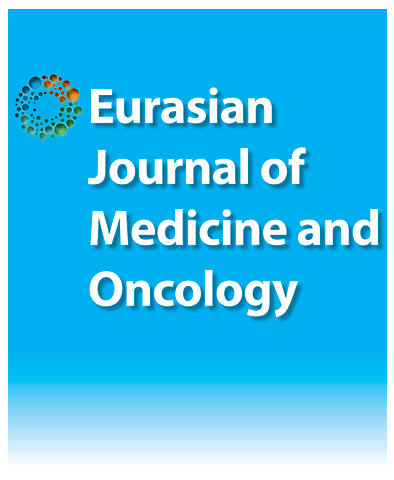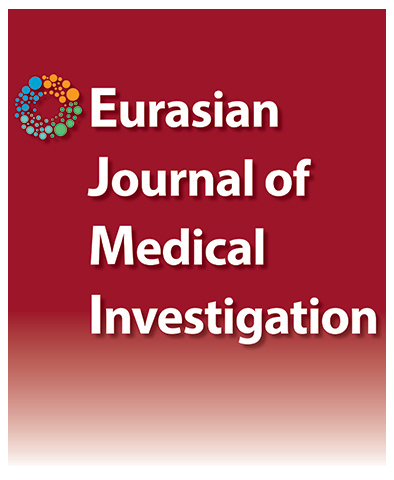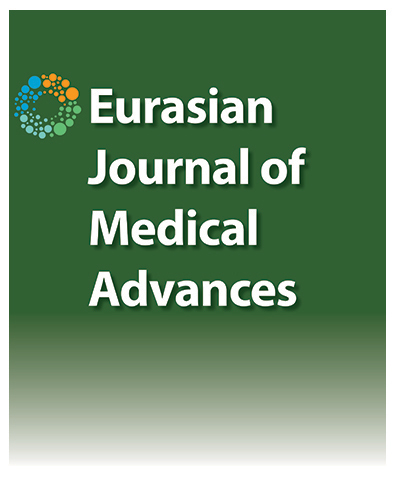Volume: 3 Issue: 2 - 2023
| REVIEW | |
| 1. | Sexual Disorders in Breast Cancer Survivors Bengü Mutlu Sütcüoğlu doi: 10.14744/ejma.2022.00710 Pages 45 - 50 Breast cancer survivors (BCS) often experience sexual desire, interest, arousal, orgasm, and genitopelvic pain. Sexual difficulties are underdiagnosed and undertreated in BCS, despite their prevalence. This study sought to look into the primary studies that intervene on sexual dysfunction in BCS. In the absence of RCTs, observational studies on vaginal therapies were included. Regular and prolonged use of vaginal moisturizers has been demonstrated to reduce vaginal dryness, dyspareunia, and sexual discontentment. Diverse aspects of sexual health were consistently improved by sexual dysfunction educational and counseling therapy. Physical activity, transdermal testosterone, and hot flash therapy did not consistently improve sexual health. Regarding vaginal lubricants, vibrators, dilators, pelvic floor therapy, flibanserin, and ospemifene, no BCS-specific information was available. The evidence quality for these studies varied between high and poor. Due to the low efficacy of each of the treatments with BCS data, clinical studies are necessary to investigate new approaches in order to provide evidence-based therapy recommendations and improve sexual function in BCS. |
| 2. | Work-Related and Occupational Liver Diseases Yasemin Yurt doi: 10.14744/ejma.2023.74046 Pages 51 - 55 The liver is an organ responsible for the metabolism of drugs, many chemicals and various nutrients in the body. For this reason, it is inevitable that the liver will be affected by many factors that are exposed at work. Epidemiological data on occupational liver diseases are insufficient. It is always important to take an occupational anamnesis and evaluate the risks exposed while evaluating liver functions in periodic examinations at work, in hospital polyclinics. |
| 3. | Importance of Testicular Torsion Management: A Systematic Review Özge Öztürk doi: 10.14744/ejma.2022.25733 Pages 56 - 60 Testicular torsion is the most important and common urological emergency. The annual incidence of testicular torsion approximately 3,8 per 100,000 boys under 18 years. Prompt recognation, treatment and chase are necessary for testicular salvage. This condition must be excluded in all patients, present with acute scrotum. The patients who suffer from acute scrotum typically have scrotal pain, nausea and vomiting. Some symptoms like pain of lower part of abdomen, painless swallowed scrotum can not occured rare. If anamnesis and physical examination promote torsion, immediate surgical exploration is important. Delay treatment decrease the salvage level of torsion and may necessiate orchiectomy. |
| 4. | Infectious Spondylodiscitis, an Overlooked Cause of Pain: A Review Aysel Çınar Sayhan doi: 10.14744/ejma.2022.08370 Pages 61 - 66 Infectious spondyloarthritis occurs through the transmission of a microorganism by various routes, causing an infection in the spine. It can be diagnosed on any desired MRI based on clinical suspicion in the presence of an appropriate clinical manifestation (fever, pain, loss of strength) along with a significant increase in leukocyte, Erythrocyte Sedimentation Rate (ESR), and C-Reactive Protein (CRP) laboratory parameters. The definitive diagnosis is made by demonstration of the microorganism in the biopsy material. Since the disease is rare and low back pain is very common in the population, the diagnosis is often missed and delayed. Therefore, it still remains an important cause of comorbidity. Delayed diagnosis of this disease, which can be treated with appropriate antibiotic therapy, may result in disability by causing neurological sequelae. The aim of this review is to provide information about infectious spondylodiscitis at a level to manage the diagnosis, treatment, and follow-up process, to keep this diagnosis in mind in patients with risk factors who present with back pain and local tenderness in the spine, especially in patients from endemic regions of tuberculosis and brucellosis, and to expand the investigation in this direction. |
| 5. | The Role of Sirtuin 2 in Chemotherapeutic Resistance Özlem Türelik, Damla Gül Fındık doi: 10.14744/ejma.2022.43531 Pages 67 - 69 The lack of effective chemotherapy agents and the development of multi-drug resistance in advanced cancers are major encountered issues during treatment phase. The resistance of cancer cells against chemotherapeutic agents may occur as a result of different mechanisms. The identification of molecular pathways involved in drug resistance will yield the occurrence of alternative therapeutic strategies. Sirtuin 2 is one of the NAD-dependent deacetylases. It is involved in carcinogenesis to fulfill oncogenic and tumor-suppressing functions. Therefore, Sirtuin 2 modulation becomes a promising approach in cancer treatments. A better understanding of Sirtuin 2 related pathways is required to provide guidance to alternative cancer treatments. There are several studies about the effects of Sirtuin 2 on various types of cancers in recent years. Within the scope of this review, it is aimed to present the molecular pathways of Sirtuin 2 and its association with chemotherapeutic resistance. |
| RESEARCH ARTICLE | |
| 6. | Orthopedic Consequences of Post-COVID-19 High-dose Corticosteroid Use and Vaccination: An Update Study Necdet Demir doi: 10.14744/ejma.2023.44154 Pages 70 - 78 Objectives: To update top-cited articles on the complications of high-dose corticosteroid use and vaccination-related avascular osteonecrosis after COVID-19. Methods: Obtaining top-cited articles on the theme of 'COVID-19 avascular necrosis' from Web of Science and determining the evidence levels according to the complication topics of these trending topic articles, along with the evaluation of Altmetric Attention Score (AAS) and Dimensions badges via ‘Altmetric it’, to determine correlation analysis between publication metrics. Results: Trending topic articles on early orthopedic complications of post-COVID-19-related high-dose steroid use have increased since 2020 and especially peaked in 2022. It is also noteworthy that the mesotopic is orthopedics and the microtopic is coronavirus. Besides, the complication most frequently mentioned in trending topic articles is femoral head avascular necrosis, and the majority of articles have evidence level 3 by SIGN100. The distribution range of AAS was especially large, while the total citation number (4.1±8.2) and average citation per year (1.6±2.7) were also slightly low. Moderately positive, statistically significant correlations were detected between the AAS, average citation per year, and total citation number (p<0.05). Conclusion: The most common osteonecrosis associated with post-COVID-19 high-dose corticosteroid use is unilateral femoral head avascular necrosis, and care should be taken in treatment. |
| 7. | Scientific Quality and Reliability Analysis of Turkish YouTube Videos on Cancer and Nutrition Elif Şahin, Duygu Bayır Garbıoğlu doi: 10.14744/ejma.2023.70298 Pages 79 - 84 Objectives: YouTube, boasting an expansive number of users, is one of the primary sources of video-based educational content worldwide. The aim of this study was to assess the content of YouTube videos about cancer and nutrition. Methods: In this cross-sectional register-based study, popular videos on YouTube about the following keywords were evaluated; “cancer and nutrition”, "nutrition in cancer patients", "chemotherapy nutrition", "nutrition in chemotherapy", and "nutrition after chemotherapy". and reliability of video content were measured using the Global Quality Score (GQS), Journal of the American Medical Association (JAMA), and the modified DISCERN (mDISCERN) tool. Results: A total of 136 videos were analyzed in the study. The median duration was 157 (30-2960) seconds and the median number of views was 1232.5 (9-1238570). Median viewing rate was 1.06 (0–732). Among the video publishers, television (TV) health programs were the most (n=42, 31%). Regarding the video category, the most (n=121, 89%) popular was informative videos for patients. In most of the videos, the narrators were non-oncology clinicians (n=41, 30%) and dietitians (n=40, 29%). Mean GQS, JAMA, mDISCERN scores were 2.25±0.95 (fair-poor quality), 1.65±1.89 (fair-poor quality), and 1.96±1.13 (poor quality), respectively. A positive correlation was found between the 3 scoring points (p<0.001 for all pairwise comparisons). There was a negative correlation between video age, duration and all of the quality scores. There was a significant difference between video quality scores according to video categories, publishers and narrators (p<0.001 for each). Conclusion: Patients and individuals who are curious about relationship between nutrition and cancer to access accurate information, individuals should be directed to the right resources. Making oncologists more visible in this field by receiving professional support and can help higher quality videos reach the public. |






